
Guests
- Feroze Sidhwatrauma surgeon who volunteered at the European Hospital in Khan Younis, Gaza.
- Rajaa MuslehGaza representative for MedGlobal and nurse who worked at Al-Shifa Hospital in Gaza City.
As the official death toll in Gaza passes more than 42,400, the true number may be impossible to know until Israel’s war is over. But medical workers who witnessed the carnage in Gaza’s hospitals are speaking out. We speak with Dr. Feroze Sidhwa about his op-ed in The New York Times that features harrowing stories from dozens of healthcare workers and CT scans of children shot in the head or the left side of the chest. The Times called the corresponding images of the patients too graphic to publish. “I personally wish that Americans could see more of what it looks like when a child is shot in the head, when a child is flayed open by bombs,” says Sidhwa. “I think it would make us think a little bit more about what we do in the world.” We also speak with Palestinian nurse Rajaa Musleh, who worked at Al-Shifa Hospital in Gaza City. “I will never forget the dogs were eating the dead body inside Shifa Hospital at the front of the emergency department. This will be stuck on my mind for my whole life,” says Musleh. “My message for the whole world: We are human beings. We are not numbers. We have the right to receive healthcare inside Gaza.”
Transcript
AMY GOODMAN: As the official death toll in Gaza passes more than 42,400, the true number may be impossible to know until Israel’s war is over. But medical workers who witnessed the carnage in Gaza’s hospitals are speaking out.
We begin today’s show with a surgeon who volunteered at the European Hospital in Khan Younis and wrote a devastating opinion piece in The New York Times headlined “65 Doctors, Nurses and Paramedics: What We Saw in Gaza.”
In a minute, we’ll be joined by Dr. Feroze Sidhwa, who begins the piece writing, quote, “I worked as a trauma surgeon in Gaza from March 25 to April 8. I’ve volunteered in Ukraine and Haiti, and I grew up in Flint, Mich. I’ve seen violence and worked in conflict zones. But of the many things that stood out about working in a hospital in Gaza, one got to me: Nearly every day I was there, I saw a new young child who had been shot in the head or the chest, virtually all of whom went on to die. Thirteen in total.
“At the time, I assumed this had to be the work of a particularly sadistic soldier located nearby. But after returning home, I met an emergency medicine physician who had worked in a different hospital in Gaza two months before me. 'I couldn't believe the number of kids I saw shot in the head,’ I told him. To my surprise, he responded: 'Yeah, me, too. Every single day,'” he said.
The piece quotes dozens of healthcare workers and includes three X-rays or CT scans of pediatric patients who were shot in the head or the left side of the chest. The person who provided the scans was Dr. Mimi Syed, who worked in Khan Younis from August 8th to September 5th and said the children usually arrived at the hospital either dead or in critical condition after suffering a single shot.
On Tuesday, The New York Times opinion section editor issued a statement refuting claims circulating online that the images were altered, saying the editors had, quote, “photographs to corroborate the CT scan images,” but, quote, “because of their graphic nature, we decided these photos — of children with gunshot wounds to the head or neck — were too horrific for publication.”
For more, we’re joined by Dr. Feroze Sidhwa, the trauma and general surgeon who wrote this piece. He also spearheaded an open letter to President Biden and Vice President Harris signed by 99 U.S. medical professionals who served in Gaza, testifying to the unprecedented scale of the healthcare catastrophe and calling for an immediate ceasefire and the end to all U.S. support for Israel.
We are also joined in Chicago by Rajaa Musleh, the country representative in Gaza of MedGlobal, a medical humanitarian aid group. She previously worked as a nurse at Al-Shifa Hospital in Gaza City.
We welcome you both to Democracy Now! Dr. Feroze Sidhwa, let’s begin with you. Thank you for joining us in the studio. We heard from you in Gaza and spoke to you right when you came out. This is very significant, this New York Times op-ed, first that the Times agreed to run it, and then the controversy around it, what they published and what they didn’t publish. Tell us the story.
DR. FEROZE SIDHWA: Yeah, the Times piece was interesting. Actually, the opinion section reached out — the visual opinion team reached out to me and asked me to write the piece. And, you know, so we came up with the idea together. And that was after we wrote an open letter, like you mentioned. We wrote one in October, but we also wrote one in July to the Biden administration. That was when the Times reached out to me and said, “Can we get information about exactly who wrote or who saw what in Gaza?” So we did. We designed a poll. I got everybody to answer it that I could. And we went on from there.
You know, the controversy that you mentioned about the images is just manufactured nonsense. It’s got no connection to reality whatsoever. These pictures are — there’s no reason to doubt them at all. Furthermore, I’ve seen the full CT scans. I’ve seen the photos of the actual wounds on the children. It’s not surprising. And these were common injuries in Gaza. I mean, like, almost everybody saw the same thing. Everybody saw kids get shot in the head. Almost everybody saw severely malnourished children.
And yeah, so, it seems like the piece has had an effect. It seems like it’s making its way around and people are seeing it, and they’re kind of horrified by what they see, which they should be.
AMY GOODMAN: And then, talk about the whole issue of whether to show the dead or dying children and their injuries.
DR. FEROZE SIDHWA: Yeah. So, that was never — so, in the piece as I wrote it, that was never part of the plan, I guess you would say. But after — once all this nonsense about people saying the images are faked came out, The New York Times, I guess they — and I wasn’t involved in that decision at all, but they had to decide whether or not to put, you know, the picture they’re talking about. She’s probably a 4- or 5-year-old girl. Her eyes are closed. She has a breathing tube down. And she has a bullet wound right here. There’s some brain matter that you can see on her hair. You know, I’m a trauma surgeon, so I’m used to seeing things like that, but I can understand what they mean when they say that they’re too horrific to publish. I personally wish that Americans could see more of what it looks like when a child is shot in the head, when a child is flayed open by bombs. I think it would make us think a little bit more about what we do in the world.
AMY GOODMAN: Did the Times also do a news piece on this, given the level of the scans you had, the pictures you had?
DR. FEROZE SIDHWA: Yeah, we collected a lot of documentary evidence from people who — or, from healthcare workers who had been in Gaza quite a bit. And all of them have quite a bit more. Yeah, everyone takes a lot of photographs and videos and things like that when they’re there. And they’re all date- and location-stamped. They’re not faked.
I don’t know if the Times news section has reached out to other people who — because, you know, their names are mostly public. I don’t know if they’ve reached out to them or not for specific comment about specific things.
I have been contacted by, I don’t think I’m exaggerating if I say, dozens of journalists since coming back from Gaza, news journalists, saying that “We want to publish about the children being shot in the head, the extent of malnutrition, especially small infants dying of malnutrition and dehydration.” And they all say that they need an overwhelming — they need a way of just kind of overwhelming their editors’ skepticism. They need just a humongous mass of evidence. So, like, I know — I probably shouldn’t name them, but I know editor — or, I know journalists at the Post, at the Times, at BBC —
AMY GOODMAN: The Washington Post.
DR. FEROZE SIDHWA: Sorry, The Washington Post, yes — who have been working on such stories for months, but still not out, despite having massive amounts of evidence.
JUAN GONZÁLEZ: And, Dr. Sidhwa — Dr. Sidhwa, what is the implication of so many children being shot in the head, when you would assume that if children are, as the Israelis claim, unfortunate collateral damage of their bombing attempts to kill militants in Gaza, how — what does this mean to you, that so many children are being found to be shot in the head?
DR. FEROZE SIDHWA: Yeah, it’s a good question. So — excuse me. So, you know, as physicians and nurses, we can’t say that this particular child or that particular child was shot on purpose or by Israel or somebody else. That’s not what we can possibly do. We’re not war crimes investigators.
But I think it’s pretty clear that when there’s a pattern of, if in every catchment — in the catchment area of every hospital in Gaza, every time any international has been around, for an entire year, on a daily basis, a child has been shot in the head in a place of 2 million people, it seems unlikely to me that that’s an accident. You know, if you look at the differential of killing between Ukraine and Israel — it depends on what day you calculate it, but the differential is literally hundreds of times. The rate of killing of children in Gaza is hundreds of times higher than it is in Ukraine. So, it’s very hard for me to believe that this is just a byproduct of a war that’s being fought in otherwise just ways. I find that hard to believe.
JUAN GONZÁLEZ: And you mentioned other battles in other wars. Your experience in those other war zones, what is the difference from what you see, aside from the children being shot in the head, other specific differences between what’s happening in Gaza and what you’ve seen in other places?
DR. FEROZE SIDHWA: Well, there’s a few. One is the massive level of destruction. Not only have the hospitals been attacked, the universities, it’s getting down to the level of destroying the water, sanitation and hygiene infrastructure and concentrating an entire population on the Mawasi — in the Mawasi area, which is basically just the beach of Gaza. Oxfam wrote a report where they estimated that when there were 500,000 people in the Mawasi area, there was one toilet for every 4,130 people there. That’s just totally outrageous. I mean, those numbers don’t exist anywhere else on the planet. Now there might be a million. Nobody really knows how many people have been pushed to the Mawasi. But these are just totally outrageous numbers.
So, you have a largely child population. Gaza is very young. It’s been incredibly concentrated. It’s been starved for a year. And the winter rains are coming, which are going to lift, you know, all the sewage and everything up out of the ground. Every sewage plant has been destroyed. Ninety percent of the water, sanitation and hygiene infrastructure has been destroyed. And the healthcare system has been destroyed. So, that’s pretty unique in my experience.
JUAN GONZÁLEZ: Yeah, and I also wanted to ask you — you recently were supposed to speak at Columbia Medical School, but your event was canceled at the last minute. Could you talk about what happened?
DR. FEROZE SIDHWA: Yeah. I wouldn’t call it my event, just because I wasn’t the organizer. But yeah, you know, I was invited with Adam Hamawy, who is an American veteran and a plastic and reconstructive surgeon, and Dr. Mark Perlmutter, who is an orthopedic and hand surgeon, a Jewish American — I think he’s been on Democracy Now!; he’s definitely been on Democracy Now! before — and Lana, whose name, last name, I just can’t pronounce, who is a surgical nurse who also was working in Gaza, and she was actually one of the first internationals to go into Gaza.
You know, we had a medical talk planned. It was a technical exercise in surgical and medical care in an extremely difficult setting. It wasn’t a political talk. But the organizers were smart. They recognized that it was very likely to be canceled at the last minute. It was canceled as we walked in the building, from what I can tell. And so, they had organized a bookstore down the street to be available. And so, smart on their part. It’s not surprising, but I think it’s pretty shameful, to be perfectly honest.
AMY GOODMAN: I wanted to bring in, in addition to Dr. Feroze Sidhwa, Rajaa Musleh, who is the country representative in Gaza of the medical humanitarian aid group MedGlobal. Earlier this year, she worked as a nurse at Al-Shifa Hospital in Gaza City. She’s currently joining us from Chicago.
Rajaa, thank you so much for being with us. You sheltered at Al-Shifa. And, of course, the head of Al-Shifa Hospital was arrested by the Israeli military. Can you describe what the situation was like then, when you were there, and what you understand, as you deal with Gaza every day, and what you’re calling for?
RAJAA MUSLEH: Yeah. Thank you so much for having me. Sorry.
Actually, I’m has trapped. I have trapped, actually, for hospital for more than 40 days. And what I’m witnesses in this period, actually, I can describe it as crimes, because we received at the hospital a huge number of injured persons coming to the emergency department, and the majority of the cases, unfortunately, women and children. And the massive of the injured for these cases was severe. It is the first time of my whole life I’m witness this kind of injury. Many people or many children come without legs, without arms. And even I’m witness a father, like, hold his children in two bags. This is the first time of my life I’m witness that severity of the bombing that using during this war.
The situation in Shifa Hospital was really very critical and very bad. There is no access to food, because there’s more than 80,000 IDPs inside the Shifa Hospital. There’s no electricity. They cut the electricity. They cut the water. And, you know, he situation was very bad.
One of the cases that I will never, ever forget it, for a girl, her age is 10 years. She was completely burned. Ninety percent of her body was burned. And she asked me to stay beside her and hold her hand, until the moment — I will never, ever forget her burned skin at my hands — until the moment I feel that, until the moment I feel guilty because I did not obey or stay beside her in the bed, because she requested that, and I did not do that; until the moment I feel guilty when she asked me about her mother and father and sister, brothers, and I cannot respond to her request, because the whole family has been killed during bombing her house.
I will never forget the dogs were eating the dead body inside Shifa Hospital at the front of the emergency department. This will be stuck on my mind for the whole life.
I will never, ever forget a boy, after the operation, his leg has been amputated, and he asked me to move his leg. What I should respond for a kid — his age is 9 years — when he asks me, “Just move my leg”? I pretend that I move his leg, and I ask him, “Is that OK?” He said, “Yes.” In this moment, I feel like my heart is broken, because the suffering of my people inside Shifa Hospital and in the whole Gaza Strip.
Now the situation on the ground, I receive calls from my colleagues from the north of Gaza. There’s no access to food, no access to water, no access to fuel for the hospitals to operate the centers or to operate the hospitals here in north Gaza. The situation is very, very critical.
I’m here in Chicago just to send my people’s message: We need ceasefire now. We need ceasefire now. Enough is enough. More than one year, and the people inside Gaza are suffering from and taste many types of death. Enough is enough. Three hundred sixty-five days, and the people inside Gaza taste all kind of death.
I’m witness the horrible of this war. I’m witness four wars before, and this war is completely different, the death everywhere, the suffering everywhere. The people just eat one time. They save the food for the children. And the children are suffering from malnutrition inside Gaza.
My message for the whole world: We are human beings. We are not numbers. We have the right to receive healthcare inside Gaza. We have the right to raise up our children. We have the right to return back our lives, our dignity. We have the right to rebuild our universities, our schools. We are human beings, and we are not numbers.
JUAN GONZÁLEZ: And, Rajaa Musleh, I wanted to ask you, the interactions you had, if any, with the Israeli soldiers. How did they treat the medical personnel, especially those who had come from other countries?
RAJAA MUSLEH: Yeah, actually, now we send the doctors from outside Gaza through Karem Abu Salem. But, you know, they prevent the Palestinian people, even they are American, to enter Gaza. So, all the people we send from outside Gaza go through Karem Abu Salem, because of Rafah border now is completely closed.
AMY GOODMAN: And finally, Dr. Feroze Sidhwa, as we hear this devastating description from Rajaa Musleh, who worked at Al-Shifa and comes from Gaza City, as you talk about the spaces being closed in this country — I mean, the lack of follow-up on your piece, when you try to speak at, for example, Columbia, it’s shut down. You have to go to a local independent bookstore. And yet the Times did publish this column. And what it’s meant, the kind of response that you’ve gotten? You haven’t stopped since you’ve come back, as you organize with doctors and nurses and medical personnel to describe what’s happening there. I also wanted to ask your response to the latest letter of the Biden administration, saying if they don’t stop — improve the situation in Gaza, if Israel doesn’t, the U.S. will cut off weapons — not this week or next week or the next week, but in a month.
DR. FEROZE SIDHWA: Yeah. So, I think the Times piece is significant in that it might represent a shift in elite opinion about just, like, Rajaa said, enough is enough, and how much more destroyed do they want Gaza to be? And that opens up some possibilities for us to be able to do things that can actually help the people of Gaza, and not just Gaza, but elsewhere, as well.
Like you mentioned, The Times of Israel, there was a letter leaked, apparently, to The Times of Israel that the Biden administration sent on Sunday — excuse me — to Ron Dermer and Yoav Gallant, the strategic affairs and defense ministers in Israel, saying that Israel has — needs to start immediately, but has up to 30 days to improve the humanitarian situation.
And they pointed out some interesting things in that letter. They said that in September, the lowest amount of aid that has ever — that’s gone into Gaza in the past year went in, in September, which means the least amount that has ever gone into Gaza. Of course, the Israelis will deny that, but it’s nevertheless quite obviously true.
And they raised the possibility of what they called consequences under NSM-20 and other American laws, meaning the laws that prevent the provision of arms to human rights abusers. Well, I think you played a Reuters journalist pointing out earlier there’s no reason to wait 30 days. It’s not like Israel hasn’t been attacking Gaza for a year. So, this has been going on for, like Rajaa said, long enough. We can stop sending them arms tomorrow, and the U.S. can lead an arms blockade against not just Israel, but Israel and all Palestinian and Lebanese armed groups. And that can stop, or at least dramatically decrease, the fighting, the death and the misery immediately.
AMY GOODMAN: I want to thank you both for being with us, Dr. Feroze Sidhwa, a surgeon in California, the San Joaquin General Hospital, his New York Times op-ed, “65 Doctors, Nurses and Paramedics: What We Saw in Gaza.” And Rajaa Musleh, country representative in Gaza of MedGlobal, a medical humanitarian aid group, previously worked as a nurse at Al-Shifa Hospital in Gaza City. She is a Palestinian from Gaza.
Next up, less than three weeks from the election, Kamala Harris is campaigning in Michigan. Will she lose votes over the Biden administration’s support for Israel’s war on Gaza and Israel’s expanding war on Lebanon? We’ll speak with Abbas Alawieh. He’s co-founder of “uncommitted” movement, a Lebanese American. Stay with us.


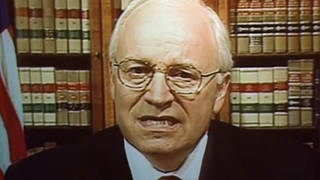
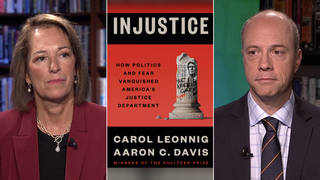
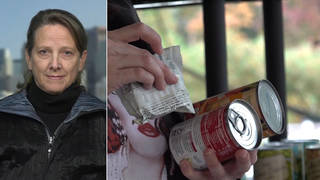





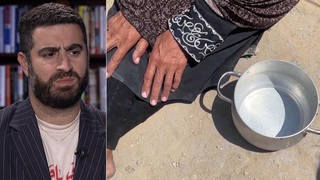
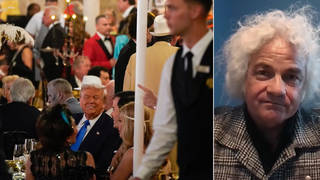
Media Options